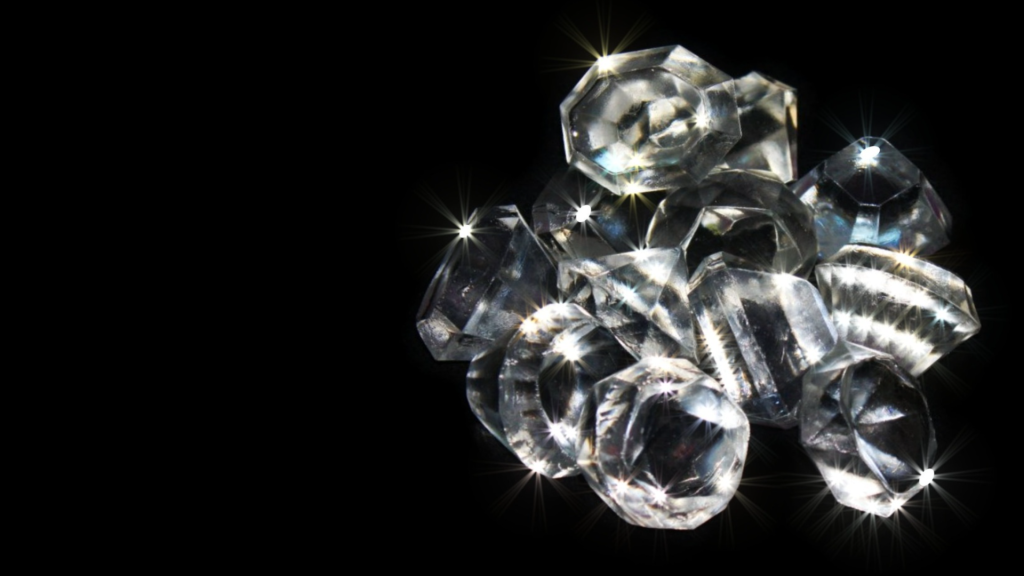Ultra-hard ‘super diamond’ developed in China, 40% stronger than natural diamonds – Interesting Engineering

Chinese researchers have successfully synthesized a rare ultra-hard diamond, first discovered in meteorites, showing promise for advanced industrial applications..11 hours ago18 hours agoa day agoa day ago2 days ago2 days ago2 days ago2 days ago3 days ago3 days ago2 hours ago8 hours ago11 hours ago13 hours ago14 hours ago16 hours ago17 hours ago17 hours ago17 hours ago17 hours agoBojan StojkovskiRepresentational image of diamonds.PxhereA group of scientists from two universities in China have created an ultra-hard, high-quality ‘super diamond’ in the lab that is many times stronger than naturally occurring diamonds.The team responsible for the breakthrough believes their creation could have applications in key sectors, as diamonds are already widely utilized in industries like cutting and polishing tools. While most natural and synthetic diamonds have a cubic structure, ultra-hard diamonds, known as lonsdaleite, have a hexagonal crystal structure.Until now, the hardest diamonds were found only in impact craters, making them both rare and small. However, researchers from Jilin University, led by Liu Bingbing and Yao Mingguang—along with Zhu Shengcai from Sun Yat-sen University in Shenzhen— have found that graphite formed a structure called the ‘post-graphite phase’.This resulted in the formation of a hexagonal diamond when compressed and heated under extremely high pressure. The findings of the team have been published in the peer-reviewed journal Nature Materials earlier this month. The first ultra-hard diamond, lonsdaleite, was discovered in the Canyon Diablo meteorite in Arizona in 1967. While scientists have since found it challenging to recreate the same artificially, the Chinese research team has come up with a method to synthesize nearly pure, well-crystallized hexagonal diamonds from graphite, the South China Morning Post reported.The study states that the synthetic diamond is of high quality and possesses excellent physical properties. It is 40% harder than natural diamonds and has greater thermal stability than nanodiamonds, which are smaller than 100 nanometers.The authors further explain that the hexagonal diamond’s excellent thermal stability and ultra-high hardness suggest its great potential for industrial applications. They also noted that their findings provide valuable insights into the graphite-to-diamond conversion under elevated pressure and temperature, opening up opportunities for the fabrication and use of this unique material.The is not the first time the diamond has been developed in the lab. In 2021, a group of US researchers reported creating hexagonal diamonds large enough to measure their stiffness using sound waves.According to Travis Volz, a co-author of the 2021 study and a postdoctoral researcher at Lawrence Livermore National Laboratory, the lab-made material had potential across industries. At the time, he emphasized its promising applications, particularly in fields requiring advanced materials.What the American scientists also found is that the hexagonal diamond is likely harder than the cubic diamond, making it a superior alternative for machining, drilling, or any application where cubic diamonds are typically used.Another author of the US study mentioned that hexagonal diamonds could potentially be used in applications like engagement rings in the future. Their unique properties might make them an interesting alternative to traditional diamonds in certain markets.Furthermore, Chinese researchers have had success before in advancing diamond materials. Diamonds, the hardest known naturally occurring material, are excellent heat conductors but cannot carry an electrical charge. Last year, a collaboration of researchers from institutions such as Zhengzhou University, Henan Academy of Sciences, Ningbo University, and Jilin University saw research teams successfully develop diamonds that are capable of conducting electricity.Bojan Stojkovski Bojan Stojkovski is a freelance journalist based in Skopje, North Macedonia, covering foreign policy and technology for more than a decade. His work has appeared in Foreign Policy, ZDNet, and Nature.Stay up-to-date on engineering, tech, space, and science news with The Blueprint.By clicking sign up, you confirm that you accept this site’s Terms of Use and Privacy Policy2 days ago2 days ago2 days agoPremiumIE PROFollow
Source: https://interestingengineering.com/science/ultra-hard-super-diamond-china-breakthrough






